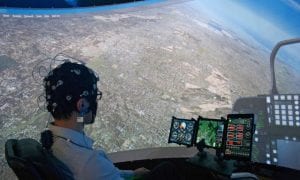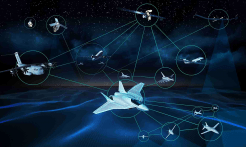The CHMI2 concept is based on a closed-loop Human-Machine System (HMS) architecture which carries out three fundamental processes: sensing, classification and adaptation. This concept has many applications in defence, aerospace, transport, and over a broad spectrum of intelligent and autonomous systems. Applications currently being studied at RMIT University include: manned-unmanned teaming, one-to-many (single pilot operating multiple unmanned aircraft), commercial airliner Single Pilot Operations (SiPO), Command and Control (C2), integrated Intelligence, Surveillance and Reconnaissance (ISR), biomedical systems, and autonomous ground/maritime vehicle operations.
Advanced sensor networks collect real-time data on the neuro-physiological states of the operator, as well as environmental conditions and key operational performance indicators. These data are used to drive adaptation of both interfaces (display, comman and control functions) and automation levels, hence providing a more intelligent and adaptive support to the operator.
The CHMI2 technology incorporates advanced artificial intelligence and integrity monitoring/augmentation techniques that enhance human-machine teaming by implementing feedback control loops both within the hardware/software components and at the interface between computational resources and human operators.






